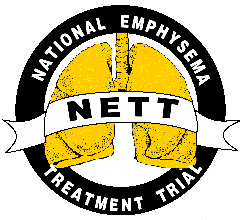Air Pollution and Lung Structure Study
Lung function growth is frequently quantified using spirometry in environmental epidemiologic studies of air pollution. Many studies have concentrated on the effects of acute exposures on short-term changes in airway function; however, few have investigated the long-term effects of chronic exposure on childhood lung function. Findings from the Children's Health Study, a 10-year longitudinal study of the chronic effects of air pollution among 6000 children residing in 12 Southern California communities, indicate that current levels of particulate matter, nitrogen dioxide, and vapor acids are associated with reduced lung function growth and lower maximum attainable measures of airway flows. The deficits (up to 8-10%) are largest and the most consistent for FEV1, MMEF, and FEF75, suggesting that flows from small airways are reduced. The magnitude of these deficits is of great concern, as an irreversible reduction in airway flows has been associated with increased risk for COPD, cardiovascular disease and all cause mortality.
A better understanding of the mechanisms for the deficits is required to determine whether there are long-term risks associated with the deficits in lung function. Although it is essential to identify the mechanism for these shortfalls, the biologic basis underlying these spirometric deficits has yet to be determined. It is critically important to establish whether the deficits in flows occur as a result of irreversible anatomic changes in the airway structure, size or wall thickness that indicate elevated long-term risk for adverse health outcomes, or whether the deficits arise from potentially reversible physiologic changes that may not influence long-term risk. If the deficits reflect structural changes, then individuals with deficits from air pollution are likely to be at increased risk for developing COPD and perhaps cardiovascular disease. Results from recent studies in primates by Plopper et al. show that air pollution exposure produces marked structural changes in the airways and parenchyma resulting in changes in branching structure as well as wall diameter.
These findings indicate that studies of the structural effects of air pollution must consider both large and small-scale changes in airways structure. Recent developments in lung imaging using High-Resolution Computerized Tomography (HRCT) now make it feasible to non-invasively study the structure of small airways as small as 2mm in diameter and the entire airway using volumetric reconstructions. These developments make it possible to investigate the anatomic relationship between air pollution associated deficits in spirometric measures of airway flow and permanent changes in the structure and function of small airways, overall airway geometry and lung parenchymal changes. In this study, we:
- Develop methods and test the feasibility of a study of the effects of air pollution on lung structure using HRCT to assess small airway diameter, wall thickness and luminal area, air trapping and parenchymal changes among Children's Health Study participants with contrasting exposure histories.
- Determine the relationships between small airway diameter, wall thickness and luminal area, air trapping and parenchymal changes and childhood pollution exposures (Ozone, NO2, PM10 , PM2.5).
- Assess the relationships between anatomic CT measurements, lung function deficits, and exhaled nitric oxide (NO) levels.
BRP 1: Image and Model Based Analysis of Lung Disease (Completed)
Ventilation, or the movement of respiratory gases in and out of the lung for exchange with the blood, is one of the primary functions of the lung. Ventilation is not uniform throughout the lung, however, and this distribution of ventilation may be further disturbed in disease processes. The ability to non-invasively measure the movement of gases throughout the lung and to relate this to the distribution of blood flow is essential to understanding normal lung function and diagnosing lung disease. These studies will use a non-toxic gas, xenon (Xe), which is visible on CT images to quantify ventilation throughout the lung. Utilizing the state of the art CT imaging technologies which will be available for this project and animal models, the long term goal of these studies is to develop the Xe-CT ventilation method to the point where it can be used to safely determine ventilation distribution in humans and be part of the comprehensive evaluation of human lung function. Specific steps in this process include refinement of the method and an extension of it to whole lung imaging, validation of the technique in well understood animal models of normal and abnormal lungs, the combination of the ventilation measurements with simultaneously developed (in other projects in the proposal) blood flow measurements, application of these methods to animal models of lung disease, and then finally, the use of the method in human studies.
BRP 2: Multi-Center Structural and Functional Quantitative CT Pulmonary Phenotyping
Biomarkers of regional lung function, coupled with validated low dose methods of assessing anatomic features of the lung are critical to promote discovery and testing of new interventions in COPD and asthma. This proposed bioengineering research partnership seeks to take advantage of the emerging acquisition technique of multi-spectral computed tomography (currently dual energy CT: DECT), careful evaluation of dose lowering methods, and novel approaches to statistical cluster analysis to expand the biomarkers used in multi-center studies to identify sub-populations of lung disease. Current CT methods have focused largely on parenchymal destruction, air trapping, and airway remodeling. With our recent findings reported in the Proceedings of the National Academy of Sciences and the New England Journal of Medicine, there is growing evidence that the etiology of emphysema may be correlated with abnormal vascular responses to inflammation in COPD. To further validate these findings, we focus on multi- spectral CT to simplify the current dynamic CT approach in its assessment of ventilation and perfusion. With DECT we can simplify to a single breath of xenon gas or a slow peripheral injection of iodinated contrast agent to assess regional ventilation or perfused blood volume (PBV). Our approach consists of 5 tightly integrated aims, seeking to:
- Establish the minimum dose required to achieve the measurements of importance in defining COPD and asthma sub-populations;
- Use our well characterized CT assessment of pulmonary perfusion and ventilation using dynamic axial imaging to validate metrics from DECT, providing indices of ventilation and perfusion via single breath hold/single lung volume techniques;
- Expand image segmentation of the lung to the pulmonary arterial and venous trees to further link structure to function as well as to reliably provide a framework for dividing the lung into sublobar segments as the standard region of interest;
- Test the application of a novel statistical approach to cluster analysis, such that the measures from quantitative CT fully account for specific phenotypes for disease subgroups and link to a computational fluid dynamics model such that a putative phenotype can be better understood;
- Provide a framework whereby newly developed protocols are harmonized across manufacturers and scanner models, allowing for cross institutional data collection and a means whereby technology is allowed to progress within the context of longitudinal studies.

Chronic Obstructive Pulmonary Disease
"The COPDGene® Study is one of the largest studies ever to investigate the underlying genetic factors of COPD. At the COPDGene® Study we are looking for answers to why some smokers will develop COPD and others will not. While it has been demonstrated that cigarette smoking can cause COPD, only a minority of smokers develop this debilitating disease thus raising the question of genetic susceptibility. Through the enrollment of over 10,000 individuals, the COPDGene® Study aims to find inherited or genetic factors that make some people more likely than others to develop COPD. With the use of CT scans, COPDGene® also seeks to better classify COPD and understand how the disease may differ from person to person." COPDGene®
"In the COPDGene® Study, CT is being used as a tool to quantify the extent of emphysema, airway wall thickening and air trapping in individual patients, in order to correlate with the genetic markers. This novel use of CT is already providing important information regarding the structural abnormalities underlying COPD." COPDGene®
Currently COPDGene® is entering Phase 2 of the program. Through funding from NHLBIall patients are being invited to a participate in a second visit five years after their first one. An extensive list of research publications are available for viewing.
Imaging Predictors of Disease Progression in COPD
Our goal is to understand how thoracic multi detector-row computed tomography (MDCT) combined with innovative image analysis techniques can be used to identify COPD patients at greatest risk. The overall objective of this proposal is to focus on the pulmonary vasculature. We hypothesize that novel quantitative MDCT-based metrics that characterize heterogeneity of pulmonary parenchymal perfusion and pulmonary vascular anatomy in early stage COPD subjects will allow us to identify subjects at greater risk for rapid disease progression. Numerous observations from our own laboratories and others point to an abnormal pulmonary vascular response to smoking induced parenchymal inflammation that leads to the development of emphysema. We have established imaging methods for the quantitative assessment of the pulmonary vascular tree and regional pulmonary parenchymal perfusion status. The former measure takes advantage of volumetric MDCT and the latter makes use of dual energy MDCT (DE-MDCt) to provide clinically implementable tools for the interrogation of lung structure and function. Our specific aims are as follows:
- Determine whether objective, quantitative measures of increased PBV heterogeneity derived from DE-MDCT, as an index of emphysema susceptibility, will serve as a very early indicator of rapid emphysema progression (assessed by MDCT) and lung function decline;
- Determine whether anatomic changes in pulmonary vascular geometry will identify subjects at risk for more rapid emphysema progression and lung function decline, possibly in more urgent need of intervention;
- Determine whether early anatomic and functional markers of vascular disease will combine to identify subjects at increased risk for development of frequent exacerbations who require more intense therapy before significant lung function decline has occurred.
In this time-sensitive proposal, we will leverage the Subpopulations and Intermediate Outcome Measures in COPD Study (SPIROMICS). SPIROMICS offers a unique opportunity to study at risk smokers and individuals with COPD in a longitudinal study that are well-characterized in terms of repeated clinical, physiological, and biological evaluations. We propose to insert a baseline DE-MDCT scan to evaluate an index of pulmonary perfusion heterogeneity (Perfused Blood Volume: PBV) in 200 GOLD 0/1 subjects at baseline and to insert a 3rd year MDCT exam into the SPIROMICS protocol for these same individuals. We also propose a year 3 MDCT exam in an additional 125 GOLD II-III SPIROMICS subjects. Our over-riding goal is to evaluate early functional and anatomic indices of vascular dysfunction to determine the association between these metrics and rate of emphysema progression, lung function decline, and risk of AECOPD.
A High Resolution CT-based Evaluation of Airway Respones to Endotoxin Inhalation
Asthma, a disorder of airway inflammation, airflow obstruction, and hyper-responsiveness, has been increasing in prevalence and severity over the past several decades. An important subset of asthma is that seen in the workplace, especially in agricultural settings. Following inhalation of organic dusts, asthmatics (and many non-asthmatics) develop airflow obstruction. Endotoxin is an important dust component that leads to airway inflammation and airflow obstruction. Importantly, currently available asthma therapies have little effect on endotoxin-induced lung disease 1, leading to few options for asthmatics who wish to continue working on the farm. Inhaled corticosteroids, the "gold standard" treatment, have been optimized for delivery to relatively large airways; responses to endotoxin may occur in smaller, more distal bronchi, thus reducing the benefit of these agents. To better understand endotoxin-induced airways disease, we propose the hypothesis that inhaled endotoxin induces a specific and characteristic pattern of inflammation and bronchospasm among individuals with hyperactive airways, which we will study in the following Specific Aims:
- Evaluate, using high-resolution computed tomography scanning, the heterogeneity and spatial pattern of endotoxin-induced bronchospasm in normal subjects.
- Compare these effects of endotoxin inhalation between normal and mild asthmatic subjects.
- Compare the effects of inhaled endotoxin and inhaled methacholine on patterns of bronchospasm in mild asthmatic subjects.
This study will improve our understanding of the natural history of asthma as well as that of airway inflammation from inhaled organic dusts. In addition, it may lead to novel therapeutic approaches to the treatment of asthma and airway responses in farmers.
Hypoxic Pulmonary Vasoconstriction
Imaging-based metrics have recently played a central role in the quest to identify COPD phenotypes, serving to establish homogenous sub-populations to aid in genotyping, therapeutic targeting and design and outcomes assessment. Recent finding in both animals and humans have led us to believe that CT derived perfusion (PBF) and mean transit time (MTT) measures within regionally injured lung parenchyma provide for a functional phenotype of which may be directly tied to the etiology of the pathologic process leading to emphysema in an acentilobular emphysema susceptible subset of the smoking population. The primary hypothesis of the proposal are built around the notion that smokers prone to emphysema have abnormal vasoregulation in that regional hypoxic pulmonary vasoconstriction (HPV) continues despite regional lung injury. This failure to block vasoconstriction alters the repair response and leads to tissue destruction in emphysema susceptible smokers (SS) with abnormal vasoregulation. The normal response to regional hypoxia is to shunt blood towards better-ventilated regions. However, smoking induces small scale, regional infiltrates which in turn lead to local hypoxia, HPV would interfere with defense mechanisms serving to clear the irritant and thus interfere with mechanisms of repair. We have demonstrated that, in SS subjects with normal PFT's but CT evidence of early centriacinar emphysema (CAE), there is an increase heterogeneity of perfusion. This is supportive of the notion that attenuation of vasoconstriction has failed. Further, we have demonstrated a tight correlation between quantitative CT evidence of emphysema with reduced LV filling down to very small amounts of emphysema. We outline a series of experiments seeking to:
- Link increased pulmonary perfusion heterogeneity in SS subjects to the lungs' response to alveolar oxygenation;
- Establish that the perfusion heterogeneity is reversible;
- Demonstrate that the response to inflammation and not just inflammation itself is a key factor in the increased heterogeneity and finally;
- Demonstrate that, by alleviating heterogeneous vasoconstriction, parenchymal hyper-density associated with smoking will clear more quickly in association with smoking cessation
With any combination of positive outcomes of this study, we will have provided new insights into disease etiology, serving to provide new targets for disease intervention and providing the tools needed for assessing outcomes.
Lung Image Database Resource for Imaging Research
The Lung Image Database Consortium is in response to a specific request to establish a generalized CT derived database representing the ground truth in lung cancer and is not hypothesis driven. Our broad goal is to help in the building of this database, and through that effort assist with the methodical development of appropriate lung cancer screening tools and protocols. Our group, with recognized experience in cooperative national projects, and with a broad perspective, will provide for the consortium:
- a well characterized group of study subjects with lung cancer
- expertise in the development of CT imaging protocols
- a functional electronic transfer system for CT data sets from multiple sites
- methods for temporal matching of CT data points across time and to histopathological data
- expertise in computational morphology, (i.e. the mathematical description of complex structures, their visualization, and their derived CT images)
- Image reconstruction algorithms
- data from two different CT manufacturers' multi-slice helical CT scanners
- with mathematically derived virtual lung models

Multi-Ethnic Study of Atherosclerosis
A study of endothelial dysfunction, biomarkers and lung function. The Iowa Lung Reading Center will accept CT images from the MESA CT Reading Center (REI), upload images, analyze them for measures of lung density, perform post-processing of results data, and transmit results to the MESA Coordinating Center. The included CT images will be for all pairs of CT images obtained from participants that are selected for inclusion in MESA-Lung, plus a 10% QA sample. MESA is composed of four different projects:
- Pulmonary vascular changes in early COPD
- Subclinical Interstitial Lung Disease in MESA-Lung
- Novel Quantitative Emphysema Subtypes in MESA and SPIROMICS
- Pulmonary microvascular perfusion in the Multi-Ethnic Study of Atherosclerosis

National Emphysema Treatment Trial
We are the "Image Storage and Analysis Center" for the National Emphysema Treatment Trial. The CT images for the study are sent to us for analysis and storage. Any information that may identify the patient identities have been stripped from the files prior to our receiving them. Human Subjects are involved in this study, but this center is only involved in the collection of the data, and qualifies for exemption under 45CFR46, Section 101 (b) paragraph 4.

National Lung Screening Trial
The purpose of this study is to compare two ways of detecting lung cancer:
- Standard chest x-ray
- Spiral computed tomography (CT) scanners
Both chest x-rays and spiral CT scans are used in an effort to find lung cancer early. So far, neither chest x-ray nor spiral CT scans have been shown to reduce a person's chance of dying from lung cancer. This study aims to show which test is better at reducing deaths from this disease. Lung cancer research is a high priority for the National Cancer Institute and it is supporting this study at more than 30 locations throughout the United States. This study is a vital part of the effort to reduce the toll of lung cancer.

Severe Asthma Research Project
The world's most comprehensive study of patients with severe asthma. SARP is designed to look for the underlying causes of severe asthma and improve its treatment. CT scans are performed to study the narrowing of airways and air trappings within asthmatics. "The overall aim is to enable prediction of phenotype stability / fluctuation and pharmacological response, and to identify novel, disease-modifying targets for treatment. This longitudinal mechanistic research approach will provide an integrated understanding of the fixed and variable molecular, cellular, and pathophysiologic underpinnings of severe asthma sub-phenotypes" NIH government grants

Severe Asthma Research Project
A study of chronic obstructive pulmonary disease (COPD) designed to guide future development of therapies for COPD by 1) providing robust criteria for sub-classifying COPD participants into groups most likely to benefit from a given therapy during a clinical trial, thereby improving the chances of successful outcome; and 2) identifying biomarkers/phenotypes that can be used as intermediate outcomes to reliably predict clinical benefit during therapeutic trials, thus reducing costs. The goal is to enroll 3,200 participants in four strata: severe COPD, mild/moderate COPD, smokers without COPD, and non-smoking controls. Participants undergo a baseline visit, including morphometric measures, spirometry, six-minute walk, chest CT, and a set of standardized questionnaires. Biospecimens, including plasma, serum, DNA, urine, and induced sputum, are collected and stored. There are three annual follow-up examinations, with quarterly telephone calls to assess for exacerbations, and mortality will be undertaken. SPIROMICS is designed so that sub-studies and ancillary studies testing additional hypotheses can be added.
Smoking Cessation
The purpose of this research study is to find out if smoking cessation combined with Sildenafil, will restore blood flow to possible injured areas of your lungs. Sildenafil is an FDA approved medication that is approved for many different uses including the treatment of pulmonary hypertension but it will be given, during this study, in a non FDA-approved manner.